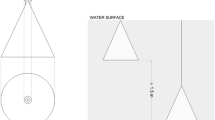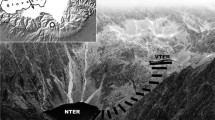Abstract
This study determined total number, biomass, taxa, and seasonal occurrence of adult aquatic insects emerging from four vegetation zones in one diked and one undiked freshwater coastal marsh on hypereutrophic lower Green Bay, Lake Michigan, USA during the summer of 1984. Floating box traps were placed in open water, sparse emergent, dense emergent, and wet meadow vegetation zones in each marsh. Insects were collected during 20 24-hour periods, each four days apart, from June 11 to August 26. Two-way ANOVA was used to test differences in number and biomass of insects between marshes and among vegetation zones. Polynomial regression was used to evaluate seasonal emergence patterns. More insects, insect biomass, and insect taxa were found in the diked marsh, especially during the first half of the sampling period. Damselflies were much more abundant in the diked marsh. Most insects and insect biomass were found in the sparse emergent vegetation zone of both marshes. The emerging insect community in the diked marsh appears enhanced by its separation from the hypereutrophic and turbid waters of lower Green Bay.
Similar content being viewed by others
Literature cited
Brenner, F.J. 1968. Energy flow in two breeding populations of redwinged blackbirds. Am. Midl. Nat. 79: 289–310.
Engel, S. 1985. Aquatic community interactions of submerged macrophytes. Tech. Bull. No. 156. Wisconsin Dept. Natural Resources, Madison, WI, USA. 79 pp.
Harris, H.J., Bosley, T.R. and Rosnik, F.D. 1977. Green Bay's coastal wetlands: a picture of dynamic change. In Wetlands Ecology, Values, and Impacts. pp. 337–358. Edited by C.B. DeWitt and E. Soloway. Institute for Environmental Studies, Univ. Wisconsin-Madison, Madison, WI, USA.
Harris, H.J., Milligan, M.S. and Fewless, G.A. 1983. Diversity: quantification and ecological evaluation in freshwater marshes. Biol. Conserv. 27: 99–110.
Harris, H.J., Sager, P.E., Yarbrough, C.J. and Day, H.J. 1987. Evolution of water resource management: a Laurentian Great Lakes case study. Internat. J. Environ. Stud. 29: 53–70.
Heaps, N.S., Mortimer, C.H. and Fee, E.J. 1982. Numerical models and observations of water motion in Green Bay, Lake Michigan. Phil. Trans. R. Soc. Lond. (series A) 306: 371–398.
Howard-Williams, C. and Lenton, G.M. 1975. The role of the littoral zone in the functioning of a shallow tropical lake ecosystem. Freshwater Biol. 5: 445–459.
Kaminski, R.M. and Prince, H.H. 1981. Dabbling duck and aquatic macroinvertebrate responses to manipulated wetland habitat. J. Wildl. Manage. 45: 1–15.
Keddy, P.A. and Reznicek, A.A. 1985. Vegetation dynamics, buried seeds and water level fluctuations on the shorelines of the Great Lakes. In Coastal Wetlands. pp. 33–51. Edited by H. Prince and M. D'Itri. Lewis Publishers, Inc., Chelsea, MI, USA.
King, D.R. and Hunt, G.S. 1967. Effect of carp on vegetation in a Lake Erie marsh. J. Wildl. Manage. 31: 181–188.
Mason, C.F. and Bryant, R.J. 1975. Periphyton production and grazing by chironomids in Aidersen Broad, Norfolk. Freshwater Biol. 5: 271–277.
Merritt, R.W. and Cummins, K.W. 1984. An introduction to the aquatic insects of North America. Kendall/Hund Publishing Co. Dubuque, IA, USA. 722 pp.
Murkin, H.R. and Kadlec, J.A. 1986. Relationships between waterfowl and macroinvertebrate densities in a northern prairie marsh. J. Wildl. Manage. 50: 212–217.
Orians, G.H. 1966. Food of nestling yellow-headed blackbirds, Caribou Parklands, British Columbia. Condor 68: 321–337.
Orians, G.H. 1980. Some Adaptations of Marsh Nesting Birds. Monographs in Population Biology, Vol. 14. Princeton Univ. Press. Princeton, NJ, USA.
Richman, S., Bailiff, M.D., Mackie, L.J. and Bolgrien, D.W. 1984. Phytoplankton standing stock, size distribution, species composition, and productivity along atrophic gradient in Green Bay, Lake Michigan. Verh. Internat. Verein. Limnol. 22: 460–469.
Sager, P.E., Richman, S., Harris, H.J. and Fewless, G. 1985. Preliminary observations on the seiche-induced flux of carbon, nitrogen, and phosphorus in a Great Lakes coastal marsh. In Coastal Wetlands. pp. 60–68. Edited by H. Prince and M. D'Itri. Lewis Publishers, Inc. Chelsea, MI, USA.
Snedecor, G.W. and Cochrane, W.G. 1967. Statistical Methods. Iowa State University Press, Ames. IA, USA. 593 pp.
Sjoberg, K. and Danell, K. 1982. Feeding activity of ducks in relation to diel emergence of chironomids. Can. J. Zool. 60: 1383–1387.
Threinin, C.W. and Helm, W.T. 1954. Experiments and observations designed to show carp destruction of aquatic vegetation. J. Wildl. Manage. 18: 247–251.
Tilton, D.L. and Schwegler, B.R. 1978. The values of wetland habitat in the Great Lakes Basin. In Wetland Functions and Values. pp. 267–277. Edited by P.E. Greeson, J.R. Clark and J.E. Clark. American Water Resources Assoc. Minneapolis, MN, USA.
Tryon, C.A. 1954. The effect of carp exclosures on growth of submerged aquatic vegetation in Pymatuning Lake, Pennsylvania. J. Wildl. Manage. 18: 251–254.
Voigts, D.K. 1973a. An odonate emergence trap for use in marshes. Proc. Iowa Acad. Sci. 80: 67–68.
Voigts, D.K. 1973b. Food niche overlap of two Iowa marsh icterids. Condor 75: 392–399.
Voigts, D.K. 1976. Aquatic invertebrate abundance in relation to changing marsh vegetation. Am. Midl. Nat. 95: 313–322.
Weller, M.W. 1978. Wetland habitats. In Wetland Functions and Values. pp. 210–234. Edited by P.E. Greeson, J.R. Clark and J.E. Clark. American Water Resources Assoc. Minneapolis, MN, USA.
Wetzel, R.G. 1983. Limnology. Sanders College Publishing. Philadelphia, PA, USA. 767 pp.
Wheeler, W.E. and March, J.R. 1979. Characteristics of scattered wetlands in relation to duck production in southeastern Wisconsin. Tech. Bull. No. 116. Wisconsin Dept. Natural Resources, Madison, WI, USA. 61 pp.
Author information
Authors and Affiliations
Rights and permissions
About this article
Cite this article
McLaughlin, D.B., Harris, H.J. Aquatic insect emergence in two Great Lakes marshes. Wetlands Ecol Manage 1, 111–121 (1990). https://doi.org/10.1007/BF00177285
Issue Date:
DOI: https://doi.org/10.1007/BF00177285




